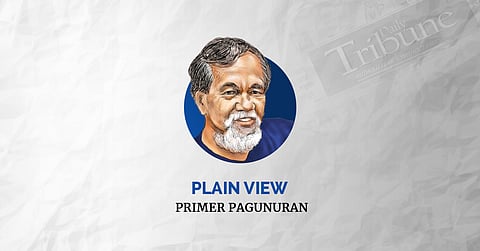
- NEWS
- the EDIT
- COMMENTARY
- BUSINESS
- LIFE
- SHOW
- ACTION
- GLOBAL GOALS
- SNAPS
- DYARYO TIRADA
- MORE

How do you solve a problem like the Ninoy Aquino International Airport (NAIA)? This is the P170-billion question that should resolve conflicted interests between flight passengers and the project proponent that won the solicited bid to upgrade the NAIA — intendedly to double passenger capacity to more than 60 million a year and increase the number of aircraft movements, or takeoffs and landings, per hour from 41 to 48.
This “highly coveted” project via public-private partnership (PPP) modality is being undertaken by a San Miguel Corp.-led consortium that promises a “revenue share for the government of 82.16 percent,” or twice the offer of its two competitors.
The green light took all of 12 months, a PPP-transport project to be completed at the fastest possible time, except there was suddenly a monkey wrench thrown in the works — the jacking up of charges and fees from end-users to shore up the consortium’s financial capacity to complete the works.
The project includes the rehabilitation of “passenger terminals and airside facilities (i.e. runway, aircraft parking area, airfield lighting) and the provision of facilities to enable intermodal transfers at the terminal.” The SMC group is set to take over NAIA on 14 September with CEO Ramon Ang guaranteeing a better airport experience.
Inasmuch as the consortium has a 15-year concession period extendable for another 10 years (if needed), how come it must concern itself with instantly jacking up what domestic or foreign passengers must pay, which is nearly twice the original rates? This impending adjustment in terminal and passenger service fees is said to have been specified in the tender documents.
Will domestic and foreign travellers be willing to pay double the old rates because the concessionaire needs to be compensated for its investment or because the charges collected are expected to improve the airport’s efficiency?
This goes against the grain of past PPPs when a rate hike was imposed only after investments had actually been made, the project was completed, and the end-users were willing to pay for the “bundle of joy” promised by the concessionaire.
Otherwise, imagine one entering a restaurant and ordering a plate of oysters hoping to find a pearl to pay the bill. Besides, this clever financing scheme ought to contravene the criteria set forth in the feasibility studies on financial viability.
End users will pay higher tolls and fees for the use of a project or service more willingly in exchange for quality, efficiency, and competitiveness of such services but not ex ante. Besides, the concession period is precisely the timeline during which the consortium should have derived a reasonable rate of return on its investment.
There are PPPs of some scope and magnitude that do not turn a profit until after a five-year construction period. It seems contrary to the “gospel of efficiency” as well as the “logic of appropriateness” for the SMC consortium to unjustifiably burden the traveling public when the overall upgrades have yet to be experienced.
Certain groups have raised a howl against the hiked terminal and passenger services fees ahead of the project completion.
SMC outlines its work plan for “terminal reassignments; construction of an off-ramp linking NAIAX to NAIA Terminal 3; relocation of water lines and electric posts; repair of elevators, escalators, toilets and air-conditioning; self check-in counters and upgrade of baggage handling system,” all towards a better airport.
It contemplates building a new terminal with an annual capacity of 35 million passengers at the abandoned Philippine Village Hotel owned by Manila International Airport Authority. Ideally, it must fully complete the project prior to seeking a rate hike from the travelling public.
It’s not difficult to dismiss as flawed, even skewed from beginning to end, this P170-billion affair. Our public managers should not succumb to the consortium’s blackmail that the only way it can finish NAIA’s rehabilitation and expansion is by allowing the rate hike.
Pray tell, is the juice worth the squeeze?
